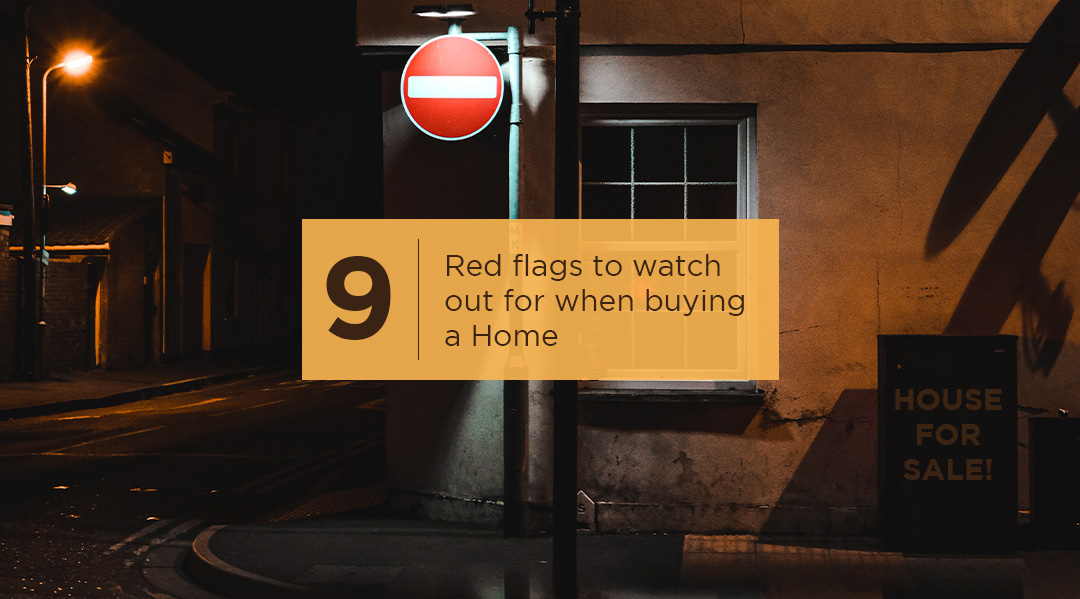Here are the top red flags to look for when buying a home?
1. Foundation Cracks
When looking at homes, it’s important to be aware of the foundation. Minor cracking can signal settling in the home, however, large cracks can be a sign of structural problems within the foundation.
If a home doesn’t have a basement where you can look at the foundation, you can tell a home probably has structural problems by looking at the door frames throughout the home. If the door frames seem not to be square or the doors seem to have difficulty closing, it’s possible there could be some problems with the structure of the home.
The best way to determine whether a home has a foundation or structural problems is by hiring a structural engineer to conduct an inspection on the home. There are many home inspectors who can determine whether a home seems to be experiencing some problems, however, it’s unlikely they will be 100% certain whether there are problems or not.
2. Moldy Smell
A moldy smell is not only unpleasant but it may also indicate a problem with the house. It may also pose a health hazard contributing to respiratory symptoms, headaches, and other illnesses, and. If you smell mold, check beneath sinks, around windows for leaks.
3. Active Insect Infestations
The presence of live termites is also alarming as they may cause so much damage to your home. One indication is small piles of tiny brown droppings on a floor near a wall. Another way to know if a house is infested especially with termites is checking for a hollow sound when you knock on a wood surface and the presence of mud tubes on a foundation since they are known to construct tiny tunnels of mud along foundations and walls to protect them from sunlight as they travel back and forth between the wood they’re munching and their below-ground nests.
4. Water Stains
Water and construction materials don’t mix. Water trickling from a leaky roof or window can over time rot away structural wood members. If water stains are yellowish or brownish, they may be evidence of a plumbing problem on an upper floor. Until you know where a leak is coming from and how much damage it’s caused, don’t make an offer.
If a seller has not attempted to cover up stains on a wall or ceiling with paint, this should still be viewed as a red flag when buying a home. If there are stains on a wall or ceiling in the home, first find out what has caused these stains. It’s possible the stains are from a prior problem that has been corrected. Not investigating a stain on a wall or ceiling can cost a buyer thousands of dollars in repairs in the future.
5. Saggy Ceiling
No matter how lovely and cozy the house, if the ceiling sags, it’s a red flag. A saggy ceiling—even if the sag is only slight—can be the result of roof leaks, a structural movement that’s causing the ceiling drywall to work loose from the ceiling joists, or an insect infestation that’s eating away at the joists. Whatever the cause, fixing it could be expensive.
6. Fresh Paint
Not all fresh paint indicates a problem. In fact, the first thing sellers will do before adding a listing is to add a new coat of paint on the walls. However, when it seems out of place, such as when only one wall in a room has been painted it indicates that the seller is trying to cover up a defect on the wall, such as a water stain.
7. Strong Air Fresheners
If you walk into a home and you are immediately hit by the strong scent of air or essential oil diffusers in every room, this could indicate that the homeowner is trying to cloak the smell of something else, such as mold smells. If you’re interested in the house, visit again later and request the seller not to use air freshener before you arrive.
When looking for a home, pleasant odors and foul odors can both be red flags.
8. Standing Water in the Yard
Always drive by the house you like after a rain. If you find puddles of standing water, the yard may have a drainage problem. Puddles near the foundation are the most concerning because water that drains along a foundation wall can cause structural problems in future.
9. Electrical System Issues
Depending on the age of a home, it’s possible there are issues with the electrical systems. Inadequate or electrical issues need to be viewed as a red flag for a buyer.
As a homebuyer, you may know very little about the electric system but there are simple things that can tell you if something is wrong or not. Such as turning on light switches, checking for flickering lights, and checking outlets are all good ways to tell if the electrical seems to be working properly. Most home inspectors will inspect the electrical panel and test the outlets to ensure the electrical systems are not a safety concern.
Two of the most common home inspection findings are issues with the electrical raiser cable as well as improper wiring throughout a home.
Final Thought
Buying a home is a huge event in anyone’s life, whether it’s a first time home buyer or an experienced home buyer. It’s critical that when buying a home, buyers are on the lookout for these red flags.
While many of these red flags may not be found while viewing a home, many of these red flags are likely to be found during a home inspection, which is why it’s extremely important to have a home inspection when buying a home.

